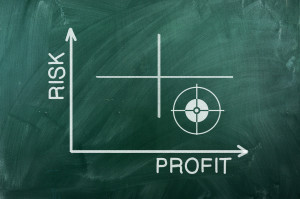 Match, Game On: Borrowers and lending agents in securities transactions executed through EquiLend, an electronic trading platform, will now be able to reconcile far more transaction details and enable lending departments to work smarter.
Match, Game On: Borrowers and lending agents in securities transactions executed through EquiLend, an electronic trading platform, will now be able to reconcile far more transaction details and enable lending departments to work smarter.
Although EquiLend’s new matching engine is still geared to US and foreign securities, the company expects it to have greatest uptick in Europe and Asia-Pacific where broker-dealers must meet shorter settlement timetables. Faster matching means they are more likely to receive the securities in time to meet their obligations, thereby avoiding settlement fails and cleanup costs.
The new matching engine Trade Match, say EquiLend officials, will match more information about the securities transaction than the older Settlement Comparison system, which handled only settlement details such as the value of the contract, the share quantity, settlement date and BIC IDs. Trade Match will additionally identify breaks in trade economics, prepayment requirements and dividend requirements.
Where Trade Match really steps ahead of its predecessor is including the details of the securities lending deals for fixed income assets, and making it easier for users to see what discrepancies they must address first. The result is reduced need for ongoing emails or calls between borrowers and lenders which can, in a worst case scenario, delay the delivery of securities from the lending agent to the borrower or delay the return of securities from the borrower to the lending agent.
Delivering and receiving more information through an automated platform can reduce manual workload in the middle and back offices of securities lending units to just addressing the breaks, which are commonly value amount, settlement date, unit quantity, currency and BICs. One more benefit for lending agents: keeping better track of outgoing and incoming securities from borrowers, allowing them to better manage overall inventory for underlying clients.
Collateral Optimization and Big Data: Relying on Big Data pre-trade scenario analysis could be the best way for financial firms to optimize the use of collateral, but the practice isn’t for all, cautions 4sight Financial Software in a new white paper.
With collateral costs rising and new regulations expected to drive up demand for collateral, collateral optimization remains the mantra in 2015. How to achieve it is an entirely different matter as the two popular approaches are far from ideal. Centralizing collateral inventory and ranking collateral in order of cost will generate some cost savings but it doesn’t look holistically at the collateral pool or all of the firm’s counterparties, says 4sight. Ranking counterparties according to how easy they are to please — based on the collateral they accept — will also be imperfect. The reason: the order in which an algorithm assigns collateral to each counterparty can influence what collateral remains in the pool for others and skews the results of the remaining allocations.
To find the cheapest collateral across all counterparties, 4sight describes an optimal approach in five steps: 1) perform an optimization run allocating in a given order to counterparties; 2) calculate the total end cost for this allocation; 3) perform the run again but in a different order, generating a total cost for this allocation; 4) carry out every possible permutation of allocation sequences, and 5) compare the costs to find the cheapest sequence.
However, 4sight recommends that financial firms consider whether it is worth the money, resources and time to apply more advanced optimization algorithms to squeeze the last few basis points of savings. The exact value of so-called Big Data optimization, the firm believes, will will ultimately depend on how much collateral increases in cost over time, the cost of hardware to crunch lots of data and the impact of new regulations.
Russia Advances: Large banks executing equity and bond trades over-the-counter will now have one more means to settle their trades on a delivery-versus payment basis.
They can do so in rubles, euros or US dollars using so-called central bank money, now that Russia’s National Settlement Depository has added a Model 1 type of delivery-versus payment settlement model. The NSD was already offering DVP settlement using the Model 2 and Model 3 approaches.
Delivery versus payment settlement — an international standard — refers to the practice of moving cash to a seller and securities to a buyer on a designated date. In the Model 2 approach, securities are delivered thoughout the processing cycle preceding the cash settlement on a net basis at the end of the processing cycle. In Model 3 there is a net settlement of however many securities and cash obligations have built up by the end of a processing cycle. By contrast, Model 1 delivery is done “against payment” with simultaneous debiting the cash and securities accounts done on an intraday trade-by-trade basis. The benefit: Although Model 1 could require a more instantaneous liquidity from participants, it does reduce their longer-term credit and liquidity exposures, say settlement experts.
The NSD’s Model 1 settlement requires transactions between two members of the NSD. Banks which wish to take advantage of the new service will either have to open a correspondent banking account with Russia’s central bank or trade with another bank which has a correspondent banking account with Russia’s central bank. NSD officials say that historically most of their participants have relied on Model 2 DVP settlement.
Leave a Comment
You must be logged in to post a comment.